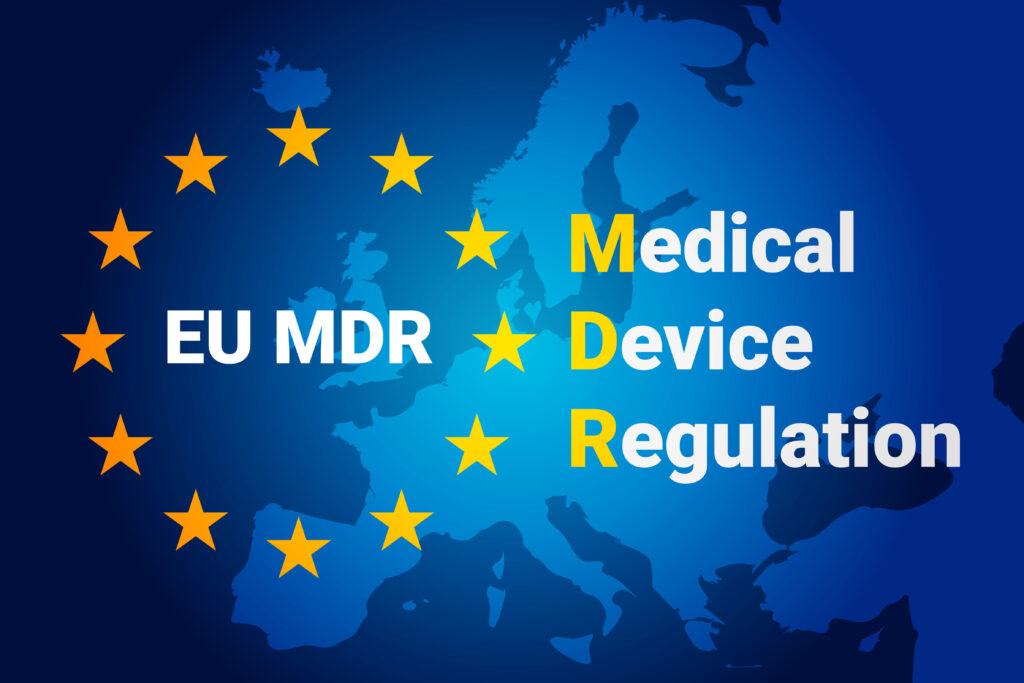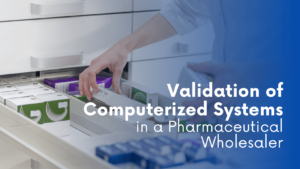The requirements brought in by the Medical Device Regulation have posed a serious challenge for many companies operating in the medical device industry. Adapting to the new legal reality requires a significant amount of time and effort. We have prepared a short guide for the transition process based on the EU recommendations to give you a clearer view of the situation.
The Medical Device Regulation (MDR) has been legally binding since May 26, 2021. In many aspects, the new regulations are considered an improvement on the Medical Devices Directive (MDD), which had been in force for almost 30 years. However, the MDR imposes stricter rules and applies also to products and issues that were not covered by the MDD. As a result, it poses a challenge to many medical companies as well as some businesses operating in the cosmetics industry.
It is worth to stress that the new regulations affect not only manufacturers but also three other groups of stakeholders identified in the MDR, namely: authorized representatives, importers and distributors, referred to as Economic Operators. Understanding the implications of the MDR is essential for many companies, so that they are able to comply with the new legal framework and stay competitive on the medical device market.
There is still some time left to fully adapt to the new business environment. The EU offers four transition periods for medical companies with regard to UDI implementation and dealing with certificates issued under the MDD. In no way does it mean that lingering is acceptable. A well-structured and determined approach to compliance is a must for companies that want to evolve in the new reality.
Implementing the MDR requirements in 12 steps
In order to help you successfully implement the MDR requirements, we have drafted a step-by-step guide for the transition process based on the EU recommendations. The process consists of 12 steps which – if performed properly – should safely drive you through the legal and practical intricacies of the new directive. Let’s give them a look.
1. Pre-assessment
Essentially, pre-assessment consists in the awareness of legal and business implications of the MDR, resulting in proper decision making and introducing necessary changes. It is crucial that you inform your management about the importance of compliance with the new regulations and make sure everyone in charge clearly understands the influence of the MDR on your business, budgeting, management and other operational issues.l
2. Gap analysis
As soon as the decision makers in your company are fully aware about the MDR requirements, you may start to prepare the gap analysis. It is advisable to begin with assessing the impact of the new regulations on the company’s current products, internal resources and the budget. Among other measures, this involves:
– checking the new classification rules, as some of the products may fall into different classes or subclasses under MDR,
– confirming the validity of your conformity assessment roles,
– determining the sufficiency of all the data collected so far in the new legal reality.
– reviewing the existing technical documentation based on the new requirements as well as crucial processes, such as post-market surveillance (PMS), vigilance, risk management (RM), to be able to handle documentation in accordance with the MDR.
3. Quality Management System (QMS)
In general terms, it is essential to verify which of the standards, procedures and SOPs currently employed by the company require updating in accordance with the new regulations. To comply with MDR it may also be necessary to create new procedures from scratch and incorporate them into your QMS. Another important obligation imposed by the new directive is to designate a person responsible for regulatory compliance. Basically, you have three options:
– to nominate a skilled expert from within the organization,
– to train an employee,
– to hire an expert.
The sooner you act, the better, as your expert will be involved in most of the activities during implementing the MDR requirements.
4. Legal entities
Although registration requirements for manufacturers haven’t changed a lot, the new policy – as opposed to the previous one – clearly specifies the rules for authorized representatives, importers and distributors. Consequently, you need to verify the companies in your supply chain with regard to their compliance with the MDR. Keep in mind that the new liability regulations may prompt some businesses to terminate particular activities in the medical device industry.
5. Portfolio verification
The cost of the transition from the MDD to the MDR environment is a crucial factor to consider. New standards and requirements regarding product classification, conformity assessment, PMS, technical documentation and so on impose additional expenses. Thus, an extensive review of your portfolio combined with a cost-benefits analysis should be an obvious step on your way to implement the new requirements. Obviously, it may result in a decision to limit the offer and stick only to selected products, ensuring their full compliance with the MDR. Mind that the portfolio review should include the verification of other parties involved in the supply chain that are liable according to the MDR rules.
6. Master implementation plan
Once you have completed the above steps, it is time to draft the master implementation plan. Basically, it is a road map comprising several subprojects, focused on critical compliance issues, such as clinical trials, documentation, PMS, and other. When planning, you should remember about the expiry dates of your certificates and focus on the products with the nearest expiry date.
7. Notified bodies
Another crucial step on the way to the MDR compliance is arranging the collaboration with the notified bodies. Their limited availability has for some time been an issue for medical device companies. So, it is strongly recommended that you contact the preferred institutions and check their capacity as well as determine the time expense necessary for performing the assessment. Only then you will be able to correctly plan all your activities.
8. Regulatory training
Adapting your business to the MDR standards requires training your staff and making them fully aware of the current regulations. It is best to conduct regulatory training gradually during the new requirements implementation process, so that at the final stage everyone involved is ready to perform their duties in accordance with the MDR norms.
9. Execution of the master implementation plan
The successful execution of the master implementation plan relies on the proper implementation of particular subprojects relating to clinical evaluation, technical documentation, PMS, vigilance, UDIs, labeling, supply chain and IT-related issues. The number and variety of subprojects depend on the specific circumstances. In any case, it is highly advisable to appoint a cross-functional project management team with clearly defined responsibilities. The team should be able to handle an overview of all the activities in all the (sub)projects covered by the master implementation plan. The purpose of this is to make sure that all the projects are consistent with one another, properly managed and effectively implemented.
10. Review of efficiency and effectiveness
Obviously, during the whole implementation process you should hold regular meetings to discuss the current project status, progress, issues, challenges and potential risks. Apart from the regular meetings, it is recommended to hold extra meetings with the decision makers to keep them up to date as to the development of the project. Of course, specific approach to the review depends on the applied methodology.
11. Notified body submission
If you haven’t been able to discuss all the necessary arrangements with the notified bodies this is the last call to do that. To avoid issues with the certification and CE conformity, make sure you are provided with detailed requirements regarding submission of the documentation, such as deadlines, terms, scope and type of data, and so on.
12. Ongoing monitoring
Apart from the monitoring applied as a part of PMS, vigilance and other standard processes, it is necessary to keep track of all the additional MDR-related updates and guidelines provided by the EU authorities. You need to make sure you properly understand all the regulations and you are following the best practices. This obligation should primarily fall on the person responsible for the MDR compliance. Last but not least, keep in mind that notified bodies are bound to perform both announced and unannounced audits. It is in your best interest to always be prepared for such an inspection.
If you have any doubts regarding MDR implementation and applying the correct procedures, don’t hesitate to contact us for consultation: validation@ecvalidation.com








